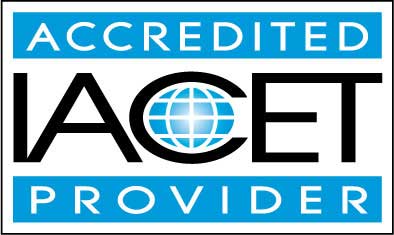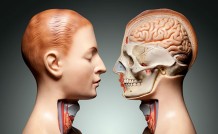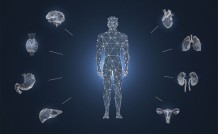Online Class: HIV — Prevention, Diagnosis, Treatment

no certificate
with CEU Certificate*
-
11Lessons
-
17Exams &
Assignments -
485Students
have taken this course -
5Hours
average time -
0.5CEUs
Course Description
Comprehensive Guide to HIV: Understanding, Prevention, and Care
Welcome to this all-encompassing course on HIV: Prevention, Diagnosis, and Treatment. Through a systematic approach, our course aims to provide clear insights into a topic that often remains shrouded in myths and misconceptions. With current statistics, a plethora of examples, and detailed explanations, students will acquire a well-rounded understanding of HIV and its broad implications.
Why This Course Matters
The distinction between HIV (Human Immunodeficiency Virus) and AIDS (Acquired Immune Deficiency Syndrome) is often misunderstood, resulting in unwarranted fears and stigmas. By comprehensively understanding these conditions, not only do patients benefit, but also their families, friends, and caregivers, fostering a supportive environment for those affected.
Course Highlights
-
The Fundamentals of HIV: Dive deep into what HIV is and how it differentiates from AIDS, debunking common myths and misconceptions.
-
HIV’s Impact on the Body: Grasp how the virus interacts with the human immune system, and the physiological changes it induces.
-
Symptoms and Diagnostics: Explore the signs that might indicate HIV infection and the modern diagnostic methods employed by healthcare professionals.
-
Prevention is Better Than Cure: Delve into actionable methods to prevent HIV transmission, focusing on industry-recommended precautions and understanding the increased risk factors associated with certain lifestyles.
-
Treatment Modalities: From globally recognized antiretroviral therapies to alternative treatments and nutritional supplements, discover the myriad ways HIV is being managed today.
-
Living Positively with HIV: Understand the dietary needs, lifestyle habits, and coping mechanisms that can help boost the immune system and enhance the quality of life for those diagnosed.
-
Transition to AIDS: Unravel the factors leading to the progression of HIV to AIDS and current research endeavors aimed at slowing this progression.
-
Breaking Stereotypes: Equip yourself with credible resources to challenge misconceptions about HIV and advocate for an informed and compassionate societal perspective.
Course Breakdown
- HIV Basics: Set a strong foundation by understanding the core aspects of HIV.
- How Does HIV Affect the Body?: Learn the physiological effects of the virus.
- Symptoms Associated With HIV: Identify potential warning signs.
- How an HIV Diagnosis Is Made: Discover the various diagnostic procedures.
- Preventing HIV Infection and Transmission to Others: Understand and champion preventive measures.
- Traditional HIV Treatment Options: Gain insight into globally-recognized treatment regimens.
- Alternative Medical Treatments for HIV: Explore beyond traditional medicine.
- Living With HIV: Embrace the measures for a healthy life post-diagnosis.
- Preventing HIV-Related Illnesses: Ward off secondary infections and complications.
- What Is My Prognosis?: Delve into the long-term outlook for those with HIV.
- Coping With HIV: Strategies and resources for mental and emotional well-being.
Who Should Enroll
This course is indispensable for anyone seeking a comprehensive understanding of HIV, especially those recently diagnosed, their families, healthcare professionals, educators, or anyone aiming to challenge the status quo surrounding HIV and AIDS.
In an era where information is power, we invite you to become empowered, informed, and compassionate. Let's build a world where understanding trumps fear, and care surpasses judgment. Join us today and make a difference, one lesson at a time.
Course Motivation
HIV stands for Human Immunodeficiency Virus. According to the Centers for Disease Control and Prevention (CDC), nearly 20,000 individuals with AIDS die in the United States every year. And nearly 57,000 more Americans are infected with HIV virus each year.
The HIV virus cannot replicate on its own, but needs to invade and infect other cells in the body on order to replicate. HIV is considered a retrovirus, or one that is slow acting that can take years between infection and onset of symptoms to develop.
HIV infections enter the body through the bloodstream, mucous membranes, or by contact with infected blood or other bodily fluids. Following infection, certain cells, called CD4+T cells, rapidly reproduce and replicate.
Think of CD4+T cells as the front-line soldiers of the immune system, the body's major defense against infection. In a healthy adult, the CD4+T cell count typically ranges above 1,000. Over time, the HIV virus gradually reduces this number. At the point where an individual has fewer than 200 of these T4 cells, the body is no longer able to protect and fight against what are known as opportunistic infections. We'll cover some of these HIV-related illnesses and infections in Lesson 9.
Following exposure to the HIV virus, the immune system's ability to properly function is disrupted. The HIV virus attacks the body's immune responses, literally disabling them, giving the virus the chance to replicate, as well as to attack and kill the body's own immune response to the virus.
Gradually, the body's immune system is destroyed to the point it is unable to protect the body against other illnesses, such as a cold, pneumonia, infections, cancers, or organ damage. Eventually, a person may enter the stage known as AIDS, or Acquired Immunodeficiency Syndrome.
What Is the Difference Between HIV and AIDS?
At its most basic definition, HIV is a virus that eventually causes AIDS. Human immunodeficiency virus merely means that a virus or infection has invaded the body, disrupting the immune system's ability to function properly. Between infection and onset of symptoms, a person may enjoy a perfectly normal and active lifestyle and activity levels, being none the wiser that a virus has invaded the body.
AIDS is not an inherited condition, but must be acquired, hence its name. The term "syndrome" implies that a number of conditions or symptoms may be present during this stage of the disease, most typically caused by failure of the immune system to function properly.
Not all people diagnosed with HIV infections have AIDS. HIV may or may not progress in stages, ending up with the AIDS diagnosis. Individuals who live with HIV infections, who don't typically experience symptoms, are called asymptomatic, meaning without symptoms. Following early symptoms of the condition, most individuals are diagnosed with early symptomatic HIV. As the condition worsens and damages the immune system, a person may be diagnosed with opportunistic infections, such as pneumonia, tumors, chronic coughs, and lung damage and organ failure.
Each individual may react to the HIV virus in a different way. For example, basketball player Earvin "Magic" Johnson was diagnosed with AIDS nearly 20 years ago. He continues to lead a fairly active and normal healthy lifestyle, even though at the time of his diagnosis, many people feared that he'd been delivered a death sentence. Because he was diagnosed as such an early stage, and continues with his drug treatments, Magic's prognosis is fairly good. Actually, many individuals today who experience both effective drug treatment coupled with early detection have a roughly 90 percent chance of holding the HIV virus in check without ever developing AIDS-related conditions or infections.
HIV and AIDS testing methodologies, education and awareness programs, as well as new drug treatments given at this stage of the disease have helped thousands of individuals lead a normal lifestyle.
A person living with HIV needs to take certain precautions, which also will be discussed in this course; but just because a person is diagnosed as HIV positive, doesn't mean the person will develop AIDS.
The next stage of the HIV virus is called seroconversion. During this time, the body's immune system produces antibodies against the HIV virus in an effort to protect itself. Common symptoms at this point may include swollen lymph nodes and flu-like symptoms. During this period, the virus is highly infectious.
Following the period of seroconversion, a person may experience what is known as an asymptomatic period. No symptoms are felt or experienced during this period. For some people, this period may last six months, while for others 10 years or more may pass symptom-free. It's impossible to determine exactly how long it takes one person or another to experience symptoms. Even if the person is not showing any symptoms, and may feel perfectly healthy and strong, the virus continues to replicate and reproduce inside the body. The replication of the virus will cause a general, gradual, and inevitable weakening and decline of the body's immune system.
Conclusion
The effects HIV may have on the body include both physical and mental changes, some of which are slower to appear than others. Again, every individual may react to the HIV virus differently, and just because one person experiences certain symptoms doesn't mean that another will experience the same.
- Completely Online
- Self-Paced
- Printable Lessons
- Full HD Video

- 6 Months to Complete
- 24/7 Availability
- Start Anytime
- PC & Mac Compatible
- Android & iOS Friendly
- Accredited CEUs

Course Lessons
Lesson 1: HIV Basics
 Lesson 1 Video
Lesson 1 Video Lesson discussions: Reasons for Taking this Course
Lesson discussions: Reasons for Taking this Course Complete Assignment: An Introduction
Complete Assignment: An Introduction Complete: Lesson 1 Assignment
Complete: Lesson 1 Assignment Assessment: Lesson 1 Exam
Assessment: Lesson 1 Exam
Lesson 2: How Does HIV Affect the Body?
 Lesson 2 Video
Lesson 2 Video Assessment: Lesson 2 Exam
Assessment: Lesson 2 Exam
Lesson 3: Symptoms Associated With HIV
 Lesson 3 Video
Lesson 3 Video Assessment: Lesson 3 Exam
Assessment: Lesson 3 Exam
Lesson 4: How an HIV Diagnosis Is Made
 Lesson 4 Video
Lesson 4 Video Lesson discussions: HIV Test
Lesson discussions: HIV Test Assessment: Lesson 4 Exam
Assessment: Lesson 4 Exam
Lesson 5: Preventing HIV Infection and Transmission to Others
 Lesson 5 Video
Lesson 5 Video Lesson discussions: Prevention
Lesson discussions: Prevention Complete: Lesson 5 Assignment
Complete: Lesson 5 Assignment Assessment: Lesson 5 Exam
Assessment: Lesson 5 Exam
Lesson 6: Traditional HIV Treatment Options
 Lesson 6 Video
Lesson 6 Video Assessment: Lesson 6 Exam
Assessment: Lesson 6 Exam
Lesson 7: Alternative Medical Treatments for HIV
 Lesson 7 Video
Lesson 7 Video Assessment: Lesson 7 Exam
Assessment: Lesson 7 Exam
Lesson 8: Living With HIV
 Lesson 8 Video
Lesson 8 Video Assessment: Lesson 8 Exam
Assessment: Lesson 8 Exam
Lesson 9: Preventing HIV-Related Illnesses
 Lesson 9 Video
Lesson 9 Video Complete: Lesson 9 Assignment
Complete: Lesson 9 Assignment Assessment: Lesson 9 Exam
Assessment: Lesson 9 Exam
Lesson 10: What Is My Prognosis?
 Lesson 10 Video
Lesson 10 Video Assessment: Lesson 10 Exam
Assessment: Lesson 10 Exam
Lesson 11: Coping With HIV
 Lesson 11 Video
Lesson 11 Video Lesson discussions: HIV Support; Program Evaluation Follow-up Survey (End of Course); Course Comments
Lesson discussions: HIV Support; Program Evaluation Follow-up Survey (End of Course); Course Comments Complete: Lesson 11 Assignment
Complete: Lesson 11 Assignment Assessment: Lesson 11 Exam
Assessment: Lesson 11 Exam Assessment: The Final Exam
Assessment: The Final Exam
Learning Outcomes
- Define what HIV is, describe how HIV affects the body, and recognize the symptoms associated with HIV.
- Summarize HIV Diagnosis Is Made.
- Describe methods for preventing HIV infection and transmission to others.
- Define traditional HIV treatment options and summarize alternative medical treatments for HIV.
- Describe living with HIV and coping with HIV.
- Describe methods of preventing HIV-related illnesses.
- Demonstrate mastery of lesson content at levels of 70% or higher.
Additional Course Information

- Document Your Lifelong Learning Achievements
- Earn an Official Certificate Documenting Course Hours and CEUs
- Verify Your Certificate with a Unique Serial Number Online
- View and Share Your Certificate Online or Download/Print as PDF
- Display Your Certificate on Your Resume and Promote Your Achievements Using Social Media

Choose Your Subscription Plan
No Certificate / No CEUs
This course only
| Includes certificate | X |
| Includes CEUs | X |
| Self-paced |

|
| Instructor support |

|
| Time to complete | 6 months |
| No. of courses | 1 course |
Certificate & CEUs
This course only
| Includes certificate |

|
| Includes CEUs |

|
| Self-paced |

|
| Instructor support |

|
| Time to complete | 6 months |
| No. of courses | 1 course |
Certificates & CEUs
Includes all 600+ courses
| Includes certificate |

|
| Includes CEUs |

|
| Self-paced |

|
| Instructor support |

|
| Time to complete | 12 Months |
| No. of courses | 600+ |
Certificates & CEUs
Includes all 600+ courses
| Includes certificate |

|
| Includes CEUs |

|
| Self-paced |

|
| Instructor support |

|
| Time to complete | 24 Months |
| No. of courses | 600+ |
Student Testimonials
- "After completing this course I have learned that there are many stages to HIV and if left untreated the disease becomes worse and you eventually develop AIDS. I am very happy to have taken this course because after learning this I realized that HIV is managable and very misunderstood. Great learning experience, the course is very informative." -- Maria B.
- "She was very prompt in grading the assignments and exams." -- Lyn L.
Related Courses
-
 74 hours
7.4 CEUs
Medical Billing and Coding Course Bundle
+ More Info
74 hours
7.4 CEUs
Medical Billing and Coding Course Bundle
+ More Info
-
 7 hours
0.7 CEUs
Understanding Concussions
+ More Info
7 hours
0.7 CEUs
Understanding Concussions
+ More Info
-
 10 hours
1.0 CEUs
Healthcare Code and Conduct
+ More Info
10 hours
1.0 CEUs
Healthcare Code and Conduct
+ More Info
-
 2 hours
0.2 CEUs
Careers in Healthcare
+ More Info
2 hours
0.2 CEUs
Careers in Healthcare
+ More Info
-
 18 hours
1.8 CEUs
Medical Terminology 101
+ More Info
18 hours
1.8 CEUs
Medical Terminology 101
+ More Info
-
 6 hours
0.6 CEUs
HIPAA Compliance 101
+ More Info
6 hours
0.6 CEUs
HIPAA Compliance 101
+ More Info
-
 7 hours
0.7 CEUs
Nutrition 101
+ More Info
7 hours
0.7 CEUs
Nutrition 101
+ More Info
-
 17 hours
1.7 CEUs
Medical Terminology 201
+ More Info
17 hours
1.7 CEUs
Medical Terminology 201
+ More Info
-
 8 hours
0.8 CEUs
Medical Office Administrative Operations
+ More Info
8 hours
0.8 CEUs
Medical Office Administrative Operations
+ More Info
-
 14 hours
1.4 CEUs
Medical Terminology for Medical Coders
+ More Info
14 hours
1.4 CEUs
Medical Terminology for Medical Coders
+ More Info
-
 5 hours
0.5 CEUs
Child Safety for Parents
+ More Info
5 hours
0.5 CEUs
Child Safety for Parents
+ More Info
-
 21 hours
2.1 CEUs
Anatomy and Physiology 101
+ More Info
21 hours
2.1 CEUs
Anatomy and Physiology 101
+ More Info
-
 17 hours
1.7 CEUs
ICD-10: Medical Coding
+ More Info
17 hours
1.7 CEUs
ICD-10: Medical Coding
+ More Info
-
 4 hours
0.4 CEUs
Stress Management
+ More Info
4 hours
0.4 CEUs
Stress Management
+ More Info
-
 35 hours
3.5 CEUs
Biology 101
+ More Info
35 hours
3.5 CEUs
Biology 101
+ More Info
-
 12 hours
1.2 CEUs
Child Abuse Recognition, Investigation, and Protection
+ More Info
12 hours
1.2 CEUs
Child Abuse Recognition, Investigation, and Protection
+ More Info
-
 5 hours
0.5 CEUs
Depression Management
+ More Info
5 hours
0.5 CEUs
Depression Management
+ More Info
-
 3 hours
0.3 CEUs
Understanding Childhood Obesity
+ More Info
3 hours
0.3 CEUs
Understanding Childhood Obesity
+ More Info









